Adult wombats taken into care usually do not face a positive outcome.
Once more STRESS is the biggest issue when dealing with wildlife. To avoid stress adult wombats are best treated in their home territory and natural environment.
For example:
- Wombat attack – wombats approaching adulthood and starting to become independent often encounter territorial disputes. These can be minor with just a few tufts of hair pulled out or quite severe with deep open wounds. Wombats that are under threat will sometimes be seen feeding during daylight as they will be avoiding the dominant wombat. Unless there is a rotting dead smell which would indicate secondary infection the wombat is best left alone. Wounds can be sprayed with Chloromide or Cetrigen which are antiseptic and fly repellent, or diluted Betadine to help with healing. There are a few different products available which will dry the wounds and stop them becoming flyblown.
- If there is infection an antibiotic will be needed to clear this up. Call your local wildlife shelter or group in your State. Otherwise contact your local vet as they should be able to advise who to contact.

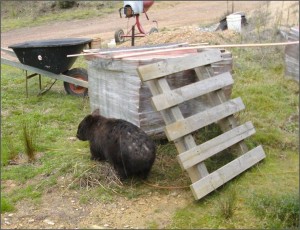
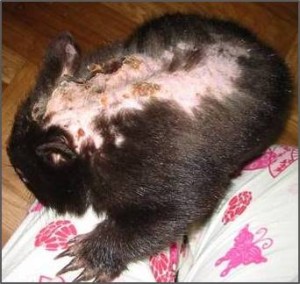
Mange – this is best treated “in field” ….. read more
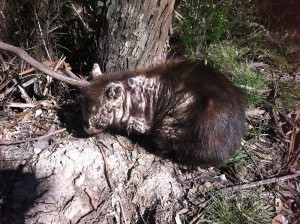

Wombat Rescues
Many wildlife carers are faced with an adult wombat rescue at some time. This may be a roadside rescue when a wombat has been hit by a car. Or maybe relocating a wombat that has found it’s way into a built up area with no sign of it’s home territory.
If you are familiar with wombat behavior these type of rescues won’t be so daunting.
- Make sure you have all the correct details and are familiar with the situation before you leave home so you can take the right equipment.
- When ever possible work in pairs. Or make sure there will be someone there to help.(an adult wombat will be very heavy and care will be needed to make sure further injury does not occur).
Rescuing an adult Injured Wombat.
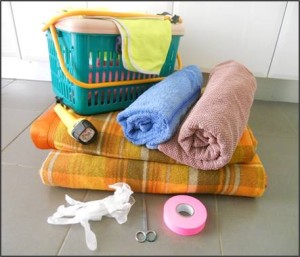
This type of rescue often takes place after dark.
Check rescue equipment before leaving – fluro vest, torch, scissors, rubber gloves, heat pack, pouch, carry cage, towels and a couple of large blankets. One large blanket folded into quarter can be used as a stretcher. The other for covering and securing the wombat.
Rolled up towels can be used to support and stop the injured wombat from rolling around during transport.
- If possible check if the wombat is male or female. If there is a joey in the pouch you will need to place mum on her side and support her with blankets and towels so she doesn’t roll and squash the joey. If possible do not remove the joey.
- Assess the situation, sometimes it isn’t necessary to transport in a cage. If the wombat is not mobile (unable to get on it’s feet) it is best to leave it on the “blanket stretcher” and cover it’s head (less handling). Wildlife settle considerably once their eyes are covered. Try to avoid unnecessary pain and trauma.
- Ring the vets before hand so they will be prepared.
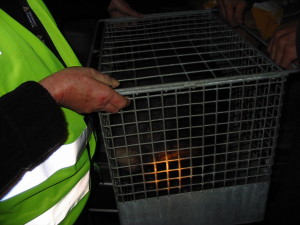
__________________________________________________________________________________________
Relocating a healthy displaced wombat.
When a wombats territory is disturbed or destroyed the wombat will sometimes become unsettled and start looking for a safer place. The wombat often ends up somewhere that is anything but safe like a suburban backyard or under a car in a carport.
This type of rescue usually occurs in daylight hours when the wombat is discovered the next day.
- Assess the situation first. You usually only get one chance to catch a healthy adult wombat.
- This type of rescue needs a strong transport cage, a couple of blankets and a couple of plastic bread crates or something similar which can be used to corral the wombat into the cage.
- Try to block all escape routes before you disturb the wombat.
- Once you have caught the wombat cover the cage to minimize stress. Relocate as soon as possible.

